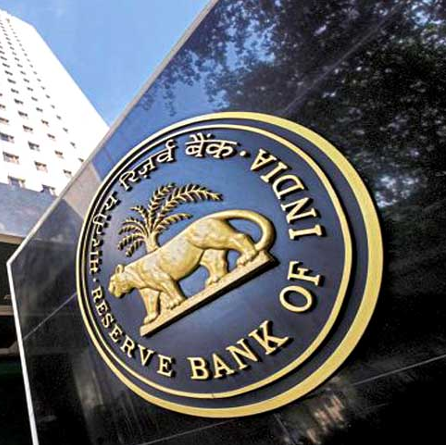Last Updated on October 1, 2025 5:56 pm by BIZNAMA NEWS
R. Suryamurthy
The Reserve Bank of India (RBI) on Wednesday kept its benchmark repo rate unchanged at 5.5% for a second consecutive meeting, weighing the disinflationary impact of a record monsoon and sweeping tax reforms against external shocks from fresh U.S. tariffs and weakening export demand.
The six-member Monetary Policy Committee (MPC) voted unanimously to hold rates steady but retained a “neutral” stance with a split verdict. Two external members — Dr. Nagesh Kumar and Prof. Ram Singh — argued for shifting to an accommodative stance, reflecting growing pressure for a rate cut.
The RBI simultaneously unveiled a series of regulatory measures designed to ease credit flows, strengthen bank resilience, and boost the international role of the rupee — signalling that monetary policy easing may come later, but regulatory support for growth has begun in earnest.
Inflation Surprise Opens Policy Space
The central bank delivered a sharp downward revision to inflation forecasts, with FY26 consumer price inflation now pegged at 2.6%, 50 basis points lower than its August projection. Quarterly numbers suggest inflation could fall to 1.8% in both Q2 and Q3 before picking up to 4.0% in Q4. FY27 inflation was left unchanged at 4.5%.
SBI Research noted that this marks a 160 bps cut from April projections, driven by a confluence of benign food prices, healthy kharif sowing, adequate reservoirs, and GST rate rationalisation .
“The momentum in food disinflation has turned out stronger than anticipated, with a surplus monsoon and restrained MSP adjustments,” said QuantEco Research. “This has opened up policy space for supporting growth without jeopardising price stability” .
Bank of Baroda added that the GST overhaul will have a double disinflationary effect — cutting indirect tax burdens while lowering core inflation by easing compliance costs .
Growth Upgrade But Risks Loom
Even as inflation undershoots, the RBI raised its FY26 GDP growth forecast by 30 bps to 6.8%, citing robust services activity, steady employment, and a GST-driven boost to domestic demand. Q2 growth is now seen at 7.0%, but Q3 and Q4 estimates were cut to 6.4% and 6.2% respectively, highlighting an expected slowdown in the second half of the year .
“The headline number looks stronger, but the underlying trajectory is weaker in H2,” said Aditi Gupta, economist at Bank of Baroda. “Trade disruptions and tariff shocks will weigh on external demand even as domestic fundamentals remain sound” .
The warning comes after Washington escalated trade actions against New Delhi — doubling penalty tariffs on Russian crude purchases, adding levies on wood, trucks, and branded drugs, and raising H-1B visa fees from $6,000 to $100,000. Analysts say the visa hike could hit India’s remittance inflows, with over 70% of H-1B visas issued to Indians in FY24 .
Regulatory Easing: More Than Just Rates
While the headline policy was a “status quo”, the RBI rolled out a sweeping set of structural reforms. These include:
• Acquisition Financing: Banks will be allowed to fund corporate takeovers, a space dominated by foreign lenders. With FY24 M&A deals worth $120 billion, SBI estimates potential incremental credit growth of ₹1.2 lakh crore .
• Lending Flexibility: Limits on IPO financing will rise from ₹10 lakh to ₹25 lakh per person, and lending against shares from ₹20 lakh to ₹1 crore, tapping into India’s growing retail equity culture.
• Large Borrowers: The withdrawal of the 2016 framework that disincentivised lending to borrowers with over ₹10,000 crore exposure could redirect ₹3–4.5 lakh crore of corporate debt from markets back to banks .
• Risk-Based Deposit Insurance: A shift from flat-rate to risk-based premiums will save stronger banks ₹1,300–1,500 crore annually.
• Basel III Endgame: Phased from April 2027, with lower risk weights for MSMEs and housing loans, expected to free up capital for targeted credit growth .
• Expected Credit Loss (ECL) Framework: Also set for April 2027 with a glide path to 2031, aligning Indian banks with global standards on provisioning.
• Rupee Internationalisation: Indian banks can now lend in INR to Bhutan, Nepal, and Sri Lanka, while special Vostro balances can be invested in corporate bonds and CPs .
“This is as much a regulatory policy as it is a monetary one,” said Soumya Kanti Ghosh, Group Chief Economic Adviser at SBI. “The measures will unlock new credit channels, boost resilience, and expand the rupee’s global footprint” .
Bonds, Liquidity, and Fiscal Balance
Despite the dovish undertone, bond markets remain watchful of supply pressures. State borrowings have risen amid welfare commitments, even as central revenues moderate. Yet, India’s recent sovereign rating upgrades by S&P, Morningstar DBRS, and R&I — the first in three decades — have bolstered confidence that fiscal discipline will be maintained .
QuantEco expects the 10-year government bond yield to hold around 6.30% by March 2026, with room for RBI to conduct open market operations if balance of payments pressures rise.
Liquidity, meanwhile, is expected to remain comfortable, aided by scheduled CRR cuts and the RBI’s two-way operations. Transmission of previous cuts has already broadened across lending products, according to Bank of Baroda .
Outlook: Policy on Two Tracks
The October review underscores a dual-track strategy: structural easing now, monetary easing later. The RBI has chosen not to pre-emptively cut rates, but its communication leaves the door ajar. With inflation subdued and growth risks tilting to the downside, most economists see room for another 25 bps cut in FY26.
“The RBI’s calibrated stance buys time,” said QuantEco. “If tariff shocks deepen or services exports weaken, the MPC will act. For now, regulatory easing does the heavy lifting” .
Bank of Baroda echoed that sentiment: “The combination of a benign inflation outlook and regulatory reforms suggests policy space is opening. The key question is timing, not direction” .
For investors, the message is clear — India’s central bank is not just managing rates, but reshaping the financial architecture to support growth in an uncertain global environment.


